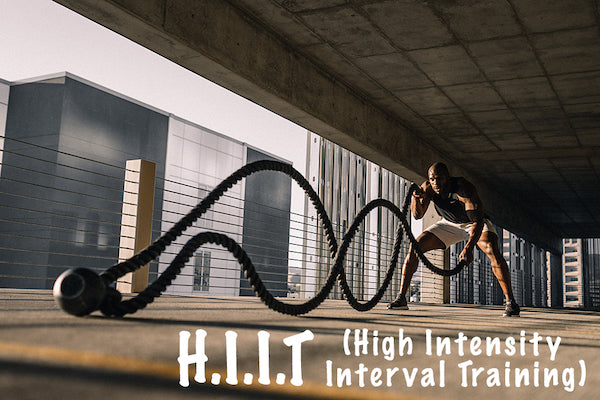
H.I.I.T! What are the benefits of high-intensity interval training (HIIT) for fat loss and cardiovascular health.
Share
High-intensity interval training (HIIT) has gained popularity in recent years for its ability to provide efficient and effective workouts. HIIT involves short bursts of high-intensity exercise followed by periods of rest or lower intensity activity. In this blog post, we’ll explore the benefits of HIIT for fat loss and cardiovascular health.
Fat Loss HIIT is an effective tool for fat loss due to its ability to increase the body’s metabolic rate. During high-intensity exercise, the body’s demand for energy increases, leading to an increase in metabolic rate. This elevated metabolic rate can continue for hours after the workout, leading to increased calorie burn and fat loss.
HIIT has also been shown to be effective for reducing visceral fat, which is the fat that accumulates around the organs and can contribute to chronic disease. One study found that 12 weeks of HIIT resulted in significant reductions in visceral fat compared to traditional continuous exercise.
In addition to its fat-burning benefits, HIIT can also help to preserve muscle mass during weight loss. This is important as muscle mass is important for maintaining metabolic rate and overall health.
Cardiovascular Health HIIT is also beneficial for cardiovascular health. Studies have found that HIIT can improve several markers of cardiovascular health, including:
-
Blood pressure: HIIT can lead to significant reductions in blood pressure, which is important for reducing the risk of heart disease.
-
Cholesterol: HIIT can improve cholesterol levels by increasing levels of HDL (“good” cholesterol) and decreasing levels of LDL (“bad” cholesterol).
-
Endothelial function: HIIT can improve the function of the endothelium, which is the inner lining of blood vessels. Improvements in endothelial function can lead to better blood flow and reduced risk of cardiovascular disease.
-
Insulin sensitivity: HIIT can improve insulin sensitivity, which is important for managing blood sugar levels and reducing the risk of type 2 diabetes.
Safety Considerations While HIIT can be an effective tool for fat loss and cardiovascular health, it’s important to take safety considerations into account. HIIT is a high-intensity exercise, which means it can be challenging and may not be appropriate for everyone.
If you’re new to exercise or have any underlying health conditions, it’s important to consult with a healthcare professional before starting a HIIT program. Additionally, it’s important to warm up properly before beginning a HIIT workout and to gradually increase intensity over time.
Conclusion High-intensity interval training (HIIT) is an effective tool for fat loss and cardiovascular health. HIIT can increase metabolic rate, leading to increased calorie burn and fat loss. It can also improve several markers of cardiovascular health, including blood pressure, cholesterol levels, endothelial function, and insulin sensitivity. As with any exercise program, it’s important to take safety considerations into account and consult with a healthcare professional before starting a new program.
